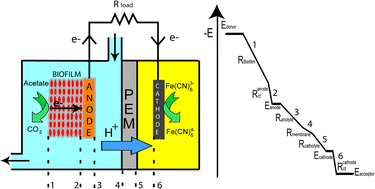Biofilm conductivity is a decisive variable for high-current-density Geobacter sulfurreducens microbial fuel cells
Abstract
Current outputs of microbial

* Corresponding authors
a
Department of Physics, University of Massachusetts, Amherst, MA, USA
E-mail:
nikhil@physics.umass.edu
Fax: +413-577-4660
Tel: +413-577-1391
b Department of Microbiology, University of Massachusetts, Amherst, MA, USA
Current outputs of microbial

 Please wait while we load your content...
Something went wrong. Try again?
Please wait while we load your content...
Something went wrong. Try again?
N. S. Malvankar, M. T. Tuominen and D. R. Lovley, Energy Environ. Sci., 2012, 5, 5790 DOI: 10.1039/C2EE03388G
To request permission to reproduce material from this article, please go to the Copyright Clearance Center request page.
If you are an author contributing to an RSC publication, you do not need to request permission provided correct acknowledgement is given.
If you are the author of this article, you do not need to request permission to reproduce figures and diagrams provided correct acknowledgement is given. If you want to reproduce the whole article in a third-party publication (excluding your thesis/dissertation for which permission is not required) please go to the Copyright Clearance Center request page.
Read more about how to correctly acknowledge RSC content.
 Fetching data from CrossRef.
Fetching data from CrossRef.
This may take some time to load.
Loading related content
